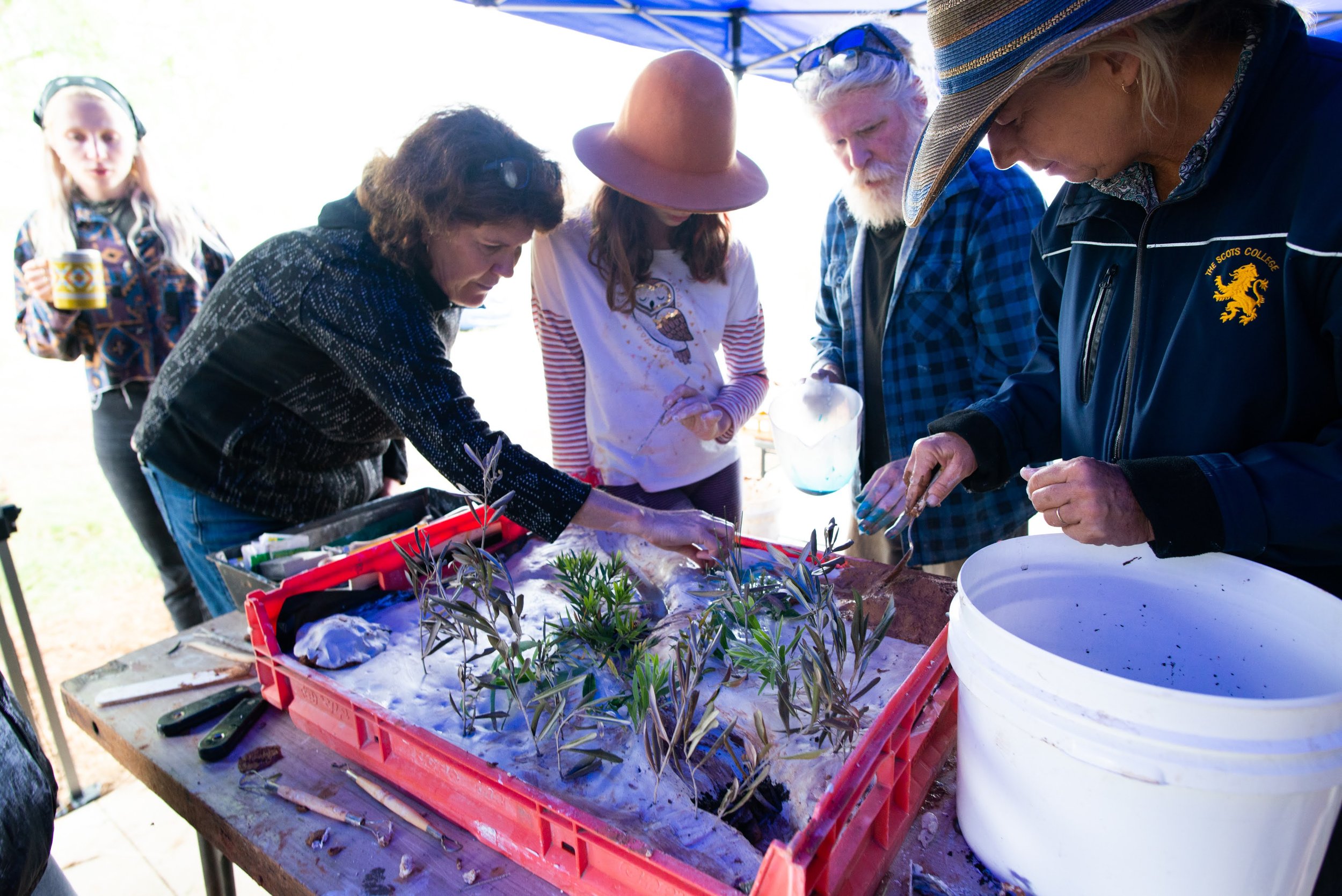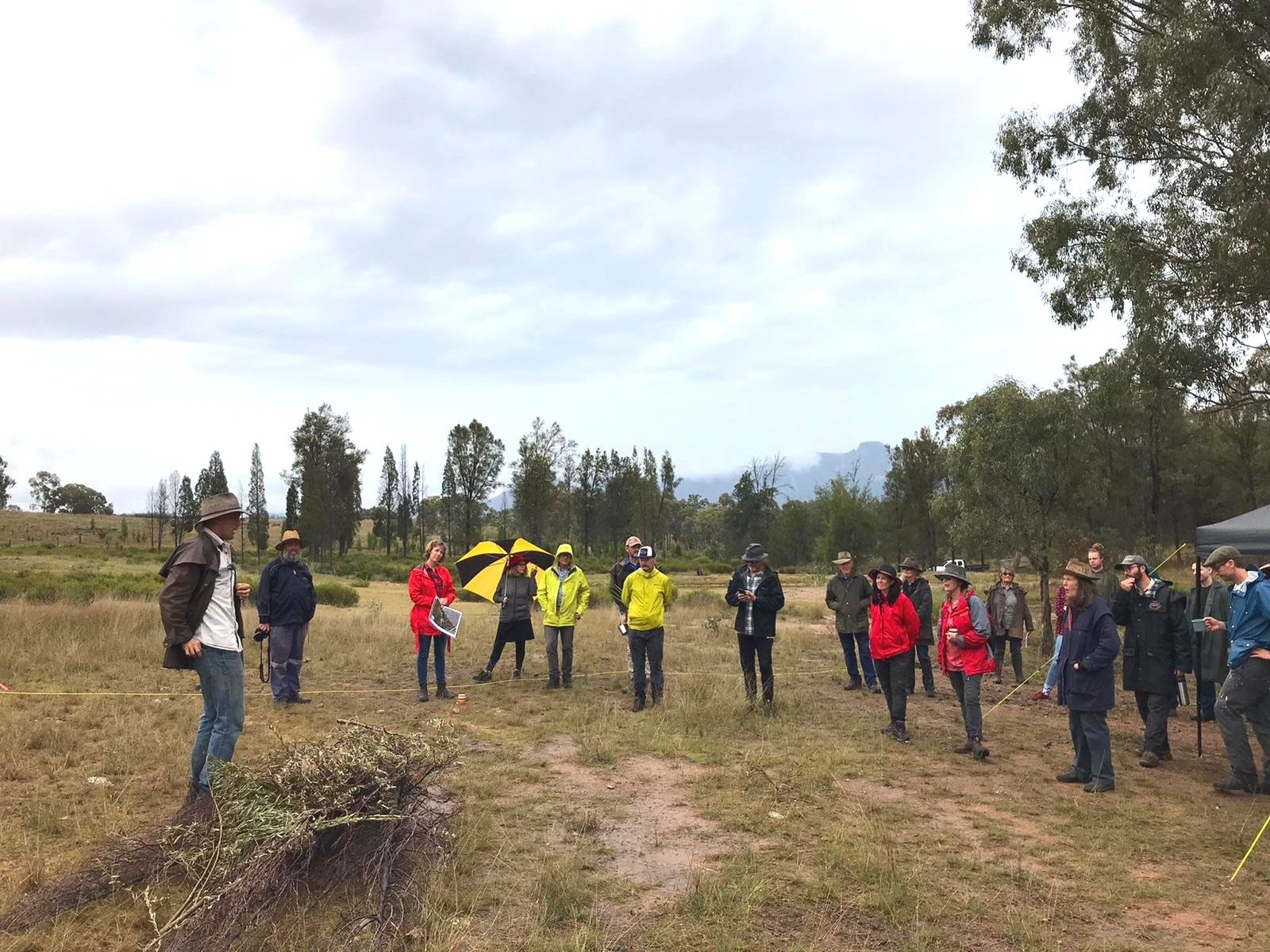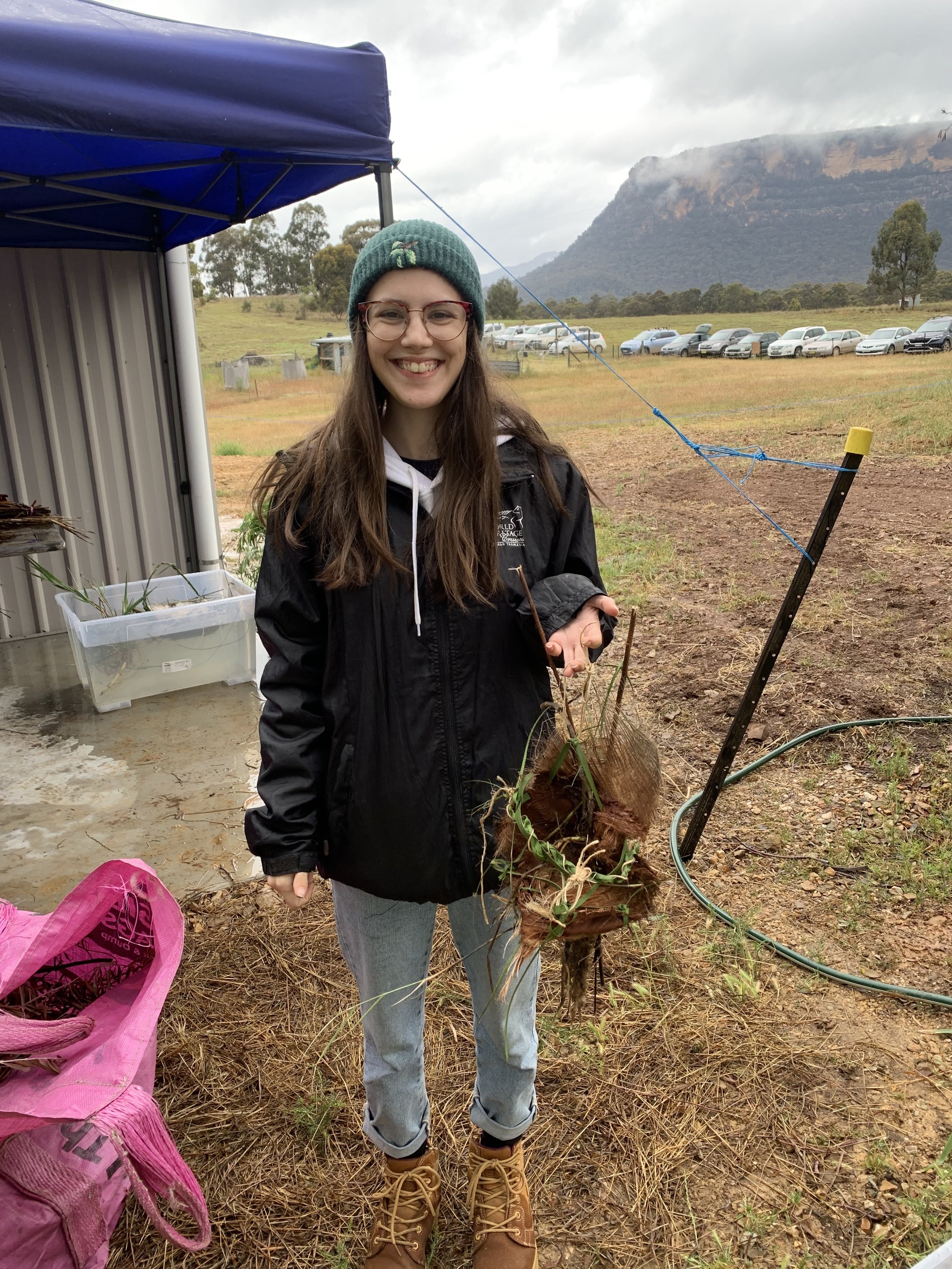Photo by Leanne Thompson
Louise Duff has been a land and water manager for over 20 years, dedicating herself to projects that improve land stewardship and drive restoration. She is currently the catchment coordinator for Midcoast Council, and has led the development of the Manning River Estuary Catchment and Management Program 2021-2031, with wide engagement with landowners and community. This is a holistic plan that exemplifies the challenge and promise of regenerating a whole catchment: an incredibly complex task because of the variety of ways farmers, businesses, Aboriginal custodians and the wider community interact with the waterways and landscapes of that area.
The plan factors in 8 themes: stewardship, biodiversity, Aboriginal custodial values, water quality and ecosystem health, climate change, social and economic values, land use planning and governance. It’s the kind of mix KSCA love to puzzle over in our projects.
Louise had come across KSCA in 2021 and learnt about Capertee Valley Hydrology Project. We invited her to attend Land Studio. She has written this testimonial about her experience, which we’re grateful to be able to publish here. So glad you could join us in the Valley Louise!
Sunrise in the Capertee Valley. Photo by Louise Duff.
Words by Louise Duff:
The Manning Valley is known for its lush pastures and the mighty Manning River with its huge catchment covering over 8,500 km from the mountains to the sea. In 2019, during the height of the worst drought on instrumental records, my colleagues and I undertook a rapid assessment, surveying 206 sites throughout the system. What we saw was vast tracts of bare soil, so compacted that when the rain eventually came it ran off, carrying nutrients and sediments into the river rather than infiltrating the soil and renewing life.
Local farmers I met through my work were talking about regenerative or ecological agriculture - farming with a stewardship ethic to restore soils and water regimes, bringing returns for both productivity and catchment management. I came to feel that promoting widespread uptake of practices that restored soil organics, repaired erosion and slowed the movement of water through the landscape is one of the most urgent challenges of our times. Such practices can both mitigate and help us adapt to the impacts of climate change, bystoring carbon, restoring the local water cycles and building resilience into rural landscapes.
The Manning River Catchment. Image courtesy Midcoast Council.
Promoting practice change is a slow and steady process. How do we support farmers to understand, trial and adopt new practices when the stakes can be high and there are so many competing messages? Agricultural extension and community-based efforts such as the Landcare movement are part of the solution. So too is the traditional approach of farmers learning from farmers, watching their neighbours across the fence, perhaps with new knowledge from young ag science graduates returning home to introduce new methods. And there is a growing interest to learn from the traditional owners of the land, Australia's First People with their deep, long history of connection to country and stewardship.
Photo by Alex Wisser
Land Studio offered a new approach - bringing together a multi-disciplinary crew of Aboriginal elders and knowledge holders, artists, university students, Natural Resource Managers, farmers and Landcarers to work together, learn from each other and provide practical support to landowners in the Capertee Valley. The event offered a playful, creative approach to land management, breaking down barriers and creating a safe space to explore new ideas and build practical skills and knowledge.
Photos by Louise Duff
The setting was truly inspiring - a vast canyon at the back end of Wollemi World Heritage Area, surrounded by diverse native pastures and eye-popping mesas that looked like a scene from Jurassic Park. The activities were well organised, educational and inspiring. Together we were welcomed to country by an Aboriginal elder, learned Wiradjiri language in a hilarious session around the campfire, and participated in a moving ceremony to bless the river and send our intentions downstream to the neighbouring Aboriginal custodians. We packed out erosion gullies with bundles of brush to help reduce run-off, restore soil levels and build organics and infiltration. We modelled catchments out of clay to really feel and understand the difference between pre colonial landscapes, agricultural impacts and repaired systems. We build crazy nests out of reeds to float in a dam and crafted clay balls from the local earth which we burnished to a beautiful shine.
Photos by Leanne Thompson
And through it all we connected with like-minded people from city and country, ate healthy food, lived simply outdoors and shared a meaningful and inspiring experience, trialing new approaches to land management and practice change.
Land Studio helped restore connections - between Traditional Owners and white settlers, between people and the land, between ecological processes that nurture soil, water and biodiversity, between city slickers and country folk.
The program had so much to offer in a time when people are searching for meaningful work and the land needs help to build resilience and remain productive and healthy. I hope this model can be repeated and shared in other communities, bringing a new approach to education, land management and practice change.



















